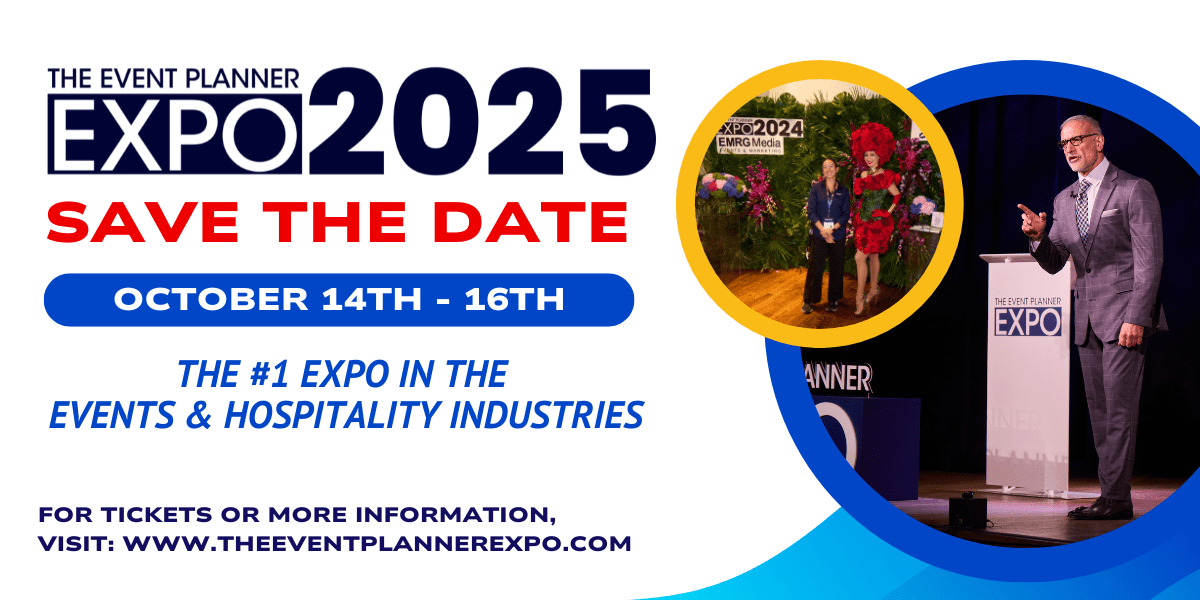From Setup to Teardown: How to Master Event Planning Logistics

If you've always wanted to be the person behind the glitz and glamor, you're in luck. We're expecting an event planning industry growth rate of 8% between now and 2032. That's nearly 10,000 new roles in the event planning world.
It's no secret that once you've got your foot in the door, it's time to impress your clients, guests, and other industry professionals. If you master event planning logistics early in your career, you'll prove yourself to be an asset and climb that ladder faster.
We're here to help you skip the learning curve. Read on for our guide to event planning logistics, from planning to setup to teardown.
Start with Your Event Goals
Event goals are client-focused. What is your client hoping to achieve with this event? This could be anything from pulling off the wedding of their dreams to launching a new product to building support for a non-profit initiative.
Your event goals are the starting point for shaping your event planning logistics. Make sure to ask questions like:
- How big is your guest list?
- What kind of entertainment will you provide?
- What style of catering (e.g., served meals vs. buffet) are you looking for?
- What is the main focus of your event?
- What is the ideal date for your event?
Every decision you make should get your client one step closer to achieving their goals. For example, imagine that the entertainment for your client's event is a series of team-building games. You'll want to find a venue with suitable indoor and outdoor space, preferably preventing the need to rearrange things like tables and chairs mid-event.
Event Goals vs. Event Value Proposition
You should also walk clients through the difference between their event goals and the event value proposition (EVP). An EVP reflects the guest's goals and the driving force behind their attendance.
For example, your client may want to raise money by hosting a benefit concert. In this case, the event goal is to hit that target dollar amount and the EVP is to see a live musical performance. Your event planning should reflect the event goals and EVP in equal measure.
Reverse Engineer Your Timeline
Once you have a target event date, it's time to create a timeline that will keep your team on track. Always start by booking your venue. You don't have an official date until you have a venue.
How early you need to get started will reflect the size and purpose of the event. You can throw together a small team-building event in a week or two. Things like weddings, expos, and major corporate events can take up to a year to plan.
The time of year can impact vendor competitiveness. Some data shows that mid-winter, late spring, and early fall see an increase in events of all kinds. If your target date falls within the peak season range, an earlier start will give you more options.
Delegate Tasks to Team Members
Your timeline will outline the latest point at which you should have certain tasks completed. This includes booking vendors, finalizing information with vendors, checking in with your clients, sending out invitations or marketing materials, and more.
If you're part of an event management team, delegate tasks on the timeline to specific people. This will free you up to oversee the logistics, rather than getting stuck hammering out small details.
Problem-Solve with Venue Choices
Let's talk a little more about how you can use your venue selection to get closer to your event goals and EVP. As you're looking for the right venue, consider things like:
- Max capacity and your projected guest count
- Built-in or included amenities (e.g., catering, on-site restrooms, or valet parking)
- Electric capabilities (e.g., number and location of outlets)
- Reception and WiFi strength
- ADA compliance for elderly or disabled guests
- Loading zones for vendors
- Layout and flow
For example, imagine that you're planning a large outdoor event. You may find plenty of venues with beautiful landscaping and views, but they also need proximity to roadways that can handle an influx of traffic.
The Importance of the Walk-Through
If you've never used a venue before, schedule a walk-through before you book. Venues may list their qualities and amenities online, but seeing them firsthand is crucial.
For example, a venue may list WiFi connectivity as one of its amenities. If your client wants to cast slides or stream live videos, the strength of that WiFi connection is important. Test the strength of that WiFi signal before making your final decision to avoid awkward mishaps on the big day.
Pick Quality Vendors
This may go without saying, but the quality of your vendors will make or break your event. For small vendors, like local event catering companies, use websites like Google Reviews, Yelp, and the Better Business Bureau to see what previous clients have to say about their skills, services, and the quality of their products. For larger companies, you can also check Indeed and Glassdoor to see if employees highlight any recurring issues with how the business is run from the inside.
The key is to look beyond star ratings. Read what previous clients have to say about things like pre-event communication and day-of service. Make sure to focus on reviews from the last six months to a year, because new ownership and employee turnover can make a big difference.
Start Building Your Personal List
To become a top event planner in your area, it's time to start building connections. Clients turn to event planners to access expertise. They expect you to not only know the best vendors but to get the best prices from those vendors.
When you use a vendor you love, reach out after the event and let them know. Ask if you can include them in your go-to vendor list and if they offer any deals or partnerships with event planners who bring in more business.
Coordinate Venue and Vendor Logistics
Booking your vendors is only half the battle. Once you've got all your contracts signed, it's time to coordinate venue and vendor logistics for a smooth setup and teardown.
Create an Event Diagram
Start by creating an event diagram that outlines everything from the stage area to seating to open areas for guests to mingle. Make sure to use updated venue blueprints that show outlets, exits, throughways, restrooms, and private areas for honored guests or entertainers to get ready. Modern technology makes it easier than ever to create a detailed diagram that you can share with everyone on your team and your vendors.
Schedule Vendor Arrival and Setup
Consult your venue representative about their equipment loading and unloading times, as many have their own logistics schedule. Talk to vendors about how early they need to arrive to get set up and how much equipment they'll need to load in. Create a "bump in" schedule to prevent vendors from arriving all at once and jamming loading docks or entry points.
Assign Troubleshooting to Team Members
At least one of your team members should be the designated troubleshooter on the day of the event, as things are bound to go wrong. Your entire time and your vendors should know who to turn to if a microphone isn't working or a tent shows up missing the right number of poles. When one person can quickly and quietly resolve problems, guests won't feel the impact or suffer the consequences of an error.
Pre-Schedule Your Bump Out
The "bump out" schedule is just as important as the "bump in" schedule because your vendors won't want to waste time in packing up and going home. Pre-schedule your bump out using a similar process you used to schedule your bump in. Find out how long it takes vendors to teardown and what assistance they may need in the process.
Make sure to schedule the bump out in a logical order. For example, your caterers need to collect their tableware before the table rental company can start collapsing and removing their tables.
Make Time for a Run-Through
Setup should be complete at least an hour before guests start to arrive, leaving time for a run-through. During your run-through, test all equipment like AV connections, microphones, and kitchen gear. Have one of your team members walk through the venue looking for any cords that need to be taped down, table placements that block the flow of foot traffic, and other hazards.
Attend the 2024 Event Planner Expo to Learn About Event Planning Logistics
Your soft skills, like great time management and communication skills, may point you in the direction of the event planning industry. Once you've got your foot in the door, it's time to master the hard skills of event planning logistics. This guide covers the basics of this intricate process, but hands-on experience will make the biggest difference to your success.
The Event Planner Expo is one of New York's biggest and longest-running industry events! Our three-day conference brings together a wide array of event industry experts, giving both new and experienced event planners a chance to learn and network. Register for the 2024 Event Planner Expo to gain more exposure and event planning know-how.
